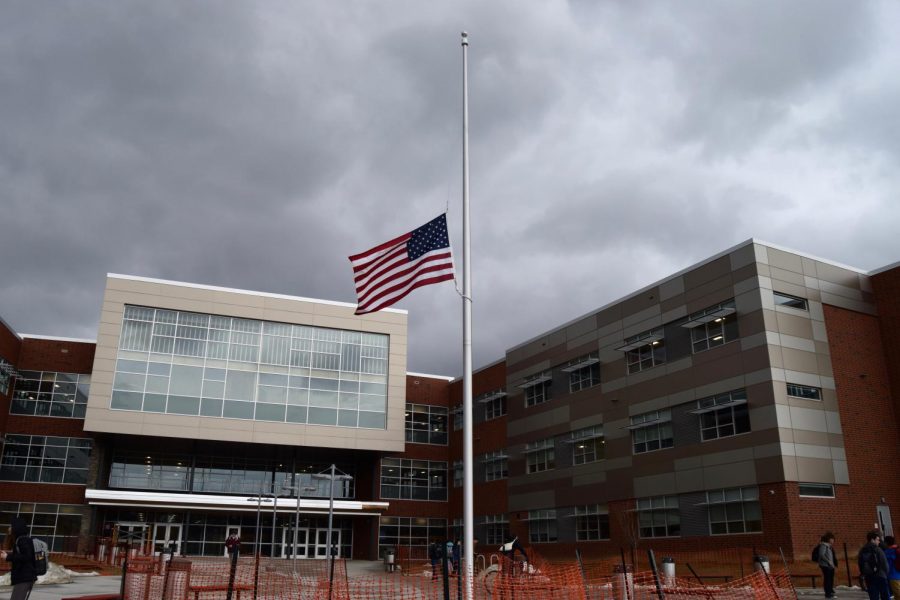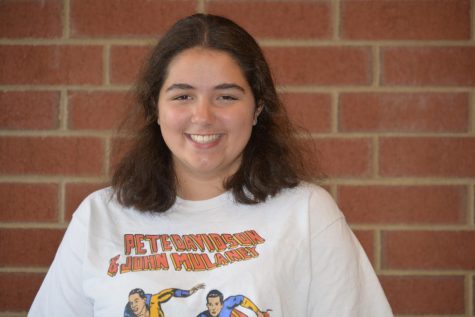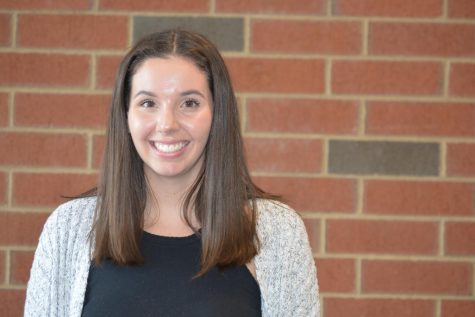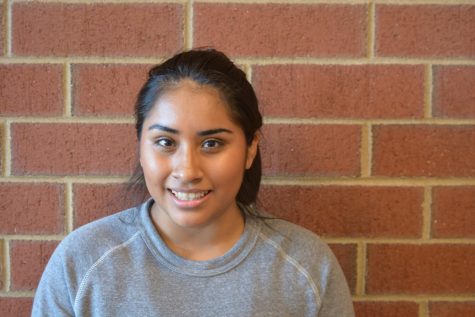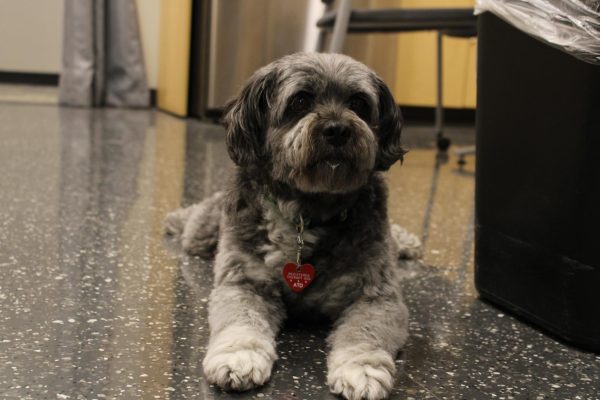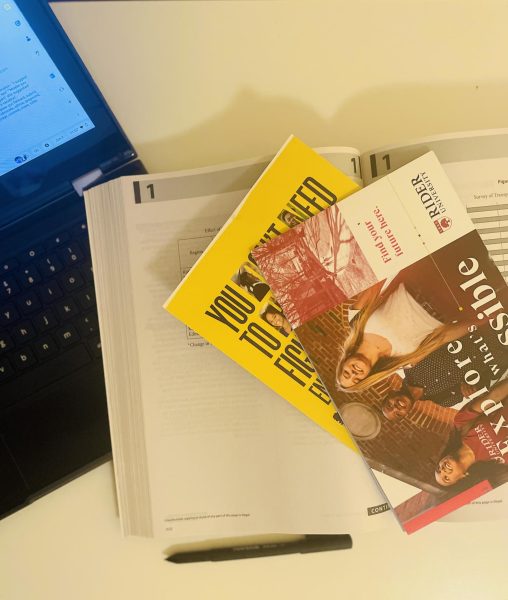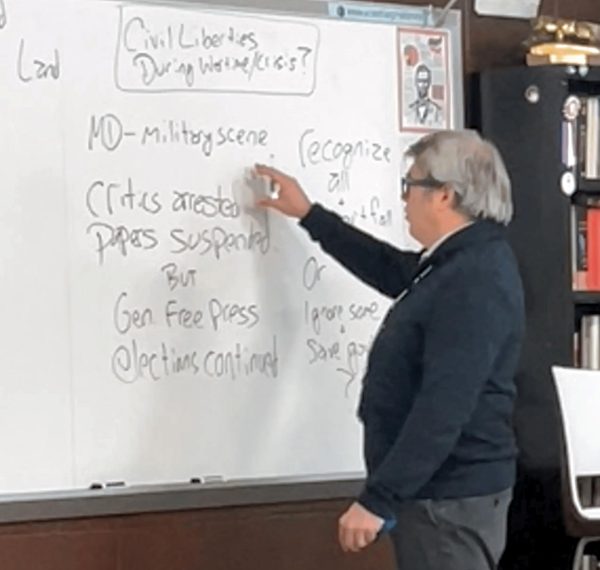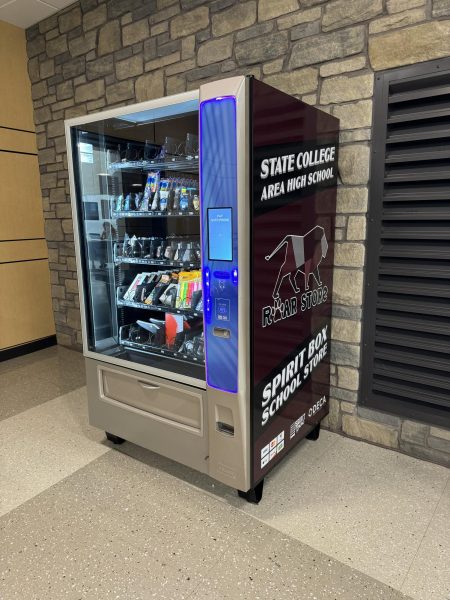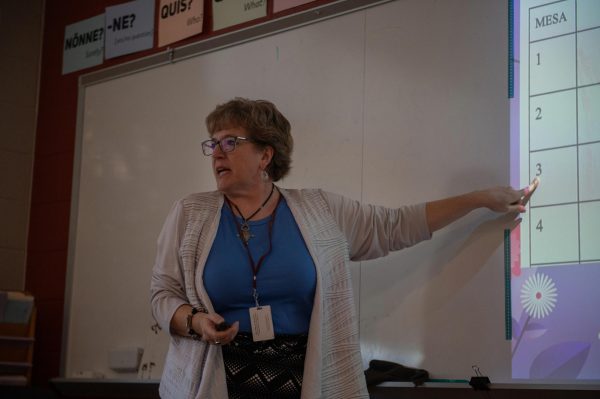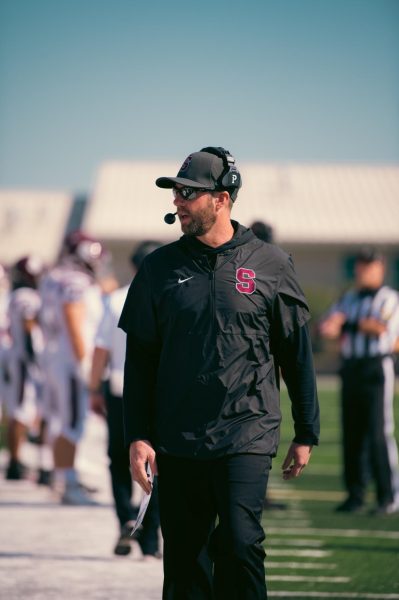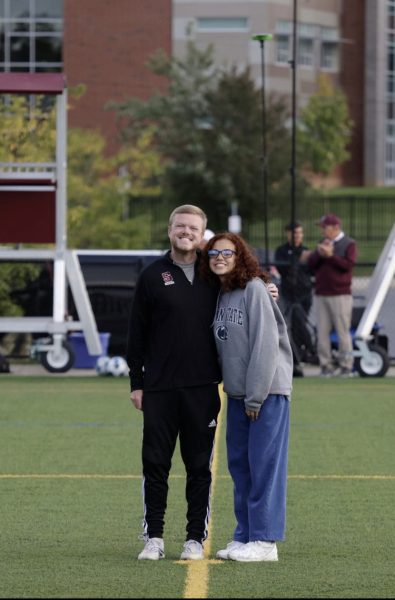Responding to Parkland:
Outlining the Conversation in Our Community
On Friday, February 16, two days after the shooting at Marjory Stoneman Douglas High School, the flag at State High sits at half mast in honor of the lives lost.
March 23, 2018
On Valentine’s Day, 17 people were killed at a high school in Parkland, Florida. Discussions followed, relating to the safety, mental health, and political aspects of the shooting.
February 14, 2018
A tragedy unfolded in the afternoon of February 14th at the South Florida high school Marjory Stoneman Douglas, after former student Nicolas Cruz opened fire on the campus with an AR-15 assault rifle, killing 17 and wounding 15.
According to the Miami Herald, “Thousands of students puzzled at the sound of an unexpected fire alarm, and were launched into a panic when gunfire punctuated the din.” They reported that “Students and teachers were puzzled because the school had already held a fire drill that day. Still, some left their bags by their desk and walked out of their classrooms.” The confusion of a second, and unexpected fire drill sent students and teachers through hallways and under desks.
“U.S. Sen. Bill Nelson told reporters that Cruz pulled a fire alarm and then, wearing a gas mask, began tossing smoke bombs and shooting people as they ran through the haze,” reported the Miami Herald. Police in the area said Cruz was known to others as a loner obsessed with weapons. He shot down a dozen people in the building, two on the campuses grounds, one more as he fled, and two more victims died in the hospital.
“I found out about the shooting on Youtube while I was scrolling through and it was shocking. I mean it was just a normal day, until it wasn’t,” Lex Pupo, sophomore, said. “My first reaction was shock and then I got mad, like how many does this make in 2018? Guns are such a prevalent problem that should not have been in the first place.”
Nineteen year old Cruz took an Uber to the school with an AR-15 rifle, multiple magazines, and smoke bombs, which he used to carry out the attack. Blending in with other students, Cruz entered the building and opened fire in the ninth grade hallway, and then fled the scene on foot. The massacre was carried out in 10 minutes, and after an hour of the shooting, Cruz was taken into custody.
“Mass shootings have become such a dismal and numbing cycle in the United States,” Amber Concepcion, School Board President, said. “[I feel] sadness for the families who lost their children, although as a parent myself, I almost can’t even let my mind go there. [I feel] anger that our country seems no closer to addressing gun violence than six years ago when the attack on Newtown occurred.”
In 2018 alone, there have been 16 other school shootings in the United States. According to Everytown, an American nonprofit organization for gun safety, a school shooting is defined as “any time a firearm discharges a live round inside a school building or on a school campus or grounds, as documented by the press and, when necessary, confirmed through further inquiries with law enforcement or school officials.”
Prioritizing Safety
Safety is considered aspect of all schools, whether that be from acts of violence, natural disasters, accidents, or fire. School shootings affect the way safety is considered in schools all around the country, whether in how safe the students feel or in the safety procedures put in place to protect students.
Regarding how safe students feel, Principal Curtis Johnson asserted, “I think students feel safe, for the most part, because we’re in State College, Happy Valley, that sort of thing. That persona goes far with us and safety is only the relationships we have with people, with students, with your community, with staff and if you have those relationships and you address areas where students are struggling or the community is struggling, I think that is safety.”
Regarding procedures, both he and Concepcion were clear that the safety of the students was the “utmost importance to their teachers, principals, and district leaders.” In general, students seemed to be aware of the administration’s emphasis on their safety.
Carene Olsson, a sophomore, mentioned the security guards and the singular open door as reasons for feeling safe. Other students however felt that the portrayal of State High as a safe area was not necessarily true.
“I think each time something happens, [the school] tries to talk about safety procedures and what to do, but I don’t think it’s really changing our school all that much. I think the superintendent and people have tried to make the school safer, but I don’t think there’s all that much more that we can do. If this were to happen at our school, I’m not totally sure we would be any safer than any other school; that’s what worrisome,” senior Savannah Wilson said.
Julie Dzielski, a junior, agreed that State College was a safe town, but noted, “We shouldn’t have the mentality ‘it can’t happen here’ because that’s the most dangerous aspect of it.” Even Johnson believed that school safety had to include more than a security guard system. “As you can see in recent shootings, it doesn’t matter how secure your facility is or how many guards you have, where there’s a will, there’s a way,” Johnson said.
He believed communication was a key part of keeping the school safe. “I think it’s more of students being active and proactive as far as letting us know if there’s a concern and addressing those issues as they come up. I think that is preventive and helps us, deal with how we can make people feel safe.”
School safety has always been a priority, but the amount of school shootings in recent times has affected both the level of safety procedures and the way people feel about the tragedies.
“I think that in many ways, gun violence has a corrosive effect on our society and civic institutions, because it creates some level of distrust and fear in fellow citizens. Fortunately, overall violent crime rates have actually been falling over the past few decades. However, the occasional mass shootings of recent creates terror and leads us to design buildings and infrastructure to be defensive,” said Concepcion.
Jacob Farris, senior, described himself as “slightly desensitized to shootings because of their frequency,” while Dzielski brought up societal numbness.
“I think as a society we are numb to it, because it happens and we tweet about [it] and then a week later we stop talking about it. It’s a week of ‘gun control’ or ‘guns aren’t the problem’, and then it’s back to normal until the next one,” she said. Despite the numbness many students felt, the event hit harder for others, including junior, Mary Rose Valentine.
“It hits home for me when I see the texts and videos coming in from students from the high school in Florida that were sent to parents, I don’t know, it continues to be incredibly emotional for me to wrap my head around such a tragedy,” Valentine said.
Giving Mental Health Meaning
Mental health has played a substantial role in school shootings across America. After the fatal shooting of 28 at Sandy Hook Elementary in 2012, the Obama administration signed into law, the 21st Century Cures Act in December 2016. An act inspired in part due to the tragedy which had occurred, and what a CBS News report called the first mental health reform action in a decade.
CBS News reported “The measures that were included in the law but still await funding include grants for intensive early intervention for infants and young children showing signs of mental illness.”
According to the New York Times, Cruz had been diagnosed with and medicated for autism and attention-hyperactivity disorder (A.D.H.D) as well as diagnosed with depression previous to the shooting on February 14, 2018. The mental health of perpetrators is looked at in detail after any mass shooting, which brings to light the amount of awareness and attention it is being given.
There are many programs in place at State High to assist those who are struggling with mental issues.
Associate Principal Kathy Pechtold said, “We partner with Penn State for integrated mental health services. So if a child can’t get to some kind of health during the after school hours, they come in here and meet with a student during school hours to get support.” There is also a club called My Mental Health Matters, which is dedicated to bringing awareness to a variety of different mental disorders.
The argument of whether people with mental health problems should have access to guns often arises after tragedies like this. “Every time we have a mass shooting, there is a group of people who say, ‘This is why we need gun control’ there’s a group of people who say ‘They’re just not right in their mind,’ and those are the same people who aren’t for comprehensive health control…,” Dzielski said. There are differing stances and immediate reactions to mass shootings and steps that should be taken to prevent them in the future.
Sophomore Natalie Cady said, “To own a gun if you are not mentally stable should not be allowed.” This opinion is one of many concerning this topic. “Psychological tests should go underway, because you can go to Walmart and buy a gun just like that, and that’s not okay,” Cady said.
Head Counselor Sue Marshall has a different perspective regarding the connection between mental health and school shootings. “One of the most important reasons to hesitate on linking mass shootings and mental illness is the fear that it will lead to the stigmatization of mental health disorders.”
There is a worry that labeling these mass murderers as people with mental illnesses would stigmatize those with other mental health issues. “And where would we draw the line with access to firearms and mental health concerns?” Marshall asks. “Should we say that all people with any diagnosis are unable to now purchase guns? How about those who are diagnosed with ADD, anxiety, etc.?”
Though the State High community may not be able to have a direct effect on the legal aspect of mass shootings, there are a variety of things they can do to have an impact on the local area. Marshall said, “Students, teachers, communities, and families should all be working to first be well educated about mental health concerns, open to talking about mental health concerns (destigmatizing mental health), educating students as to where to go for help, knowing who they can reach out to for help, familiarizing themselves with what services are offered in their schools and in their communities, and having families follow recommendations that come from mental health professionals and others that work with their children.”
Marshall also believes that “the school climate needs to be the focus, one that embraces all students, especially learning to be inclusive to those who are typically marginalized.” She believes that creating environments that are open and welcoming to everyone help to make communities safer.
The Political Divide
The effect of school shootings on society reaches farther than students and schools. There are many different beliefs about the role government plays in gun control, and even about the way gun control is a part of school shootings and gun violence. Beliefs stretch from getting rid of all possession of guns to little or no gun restrictions, and everywhere in between. This controversial topic arises each time a mass shooting occurs, and the debate intensifies with the additional question of how gun laws could or could not stop mass shootings. One stance is to push for tighter gun laws, but not ridding the country of all firearms.
“I support evidence-based gun control legislation, including background checks, improved safety features on guns, banning sales of high capacity magazines, and allocating research funds to the CDC for the study of firearms injuries as a public health matter,” said Concepcion. “Essentially, we have very good global data to show that easy access to firearms contributes to gun deaths….As a society, we need to rethink our priorities in regard to guns.”
Concepcion acknowledged that gun reform would not stop all violence, but she cited the decrease in gun violence in countries with stricter gun control. She also remained adamant that society has to “hold our legislators accountable for inaction in regard to policy reforms that would help stem the toll of gun violence.” Johnson agreed with certain aspects.
“I have no problem with people using guns for recreational use,” he said, “but the need for assault rifles and things of that nature are just above and beyond. And I think there should be some kind of legislation for that. Plus you’ve got a government that’s having some hard times getting along and pushing what’s right for the general public, rather than partisan type of beliefs. I think there needs to be a re-evaluation at that level.” Tighter gun control is not a position just held by adults; it is also a common belief among the younger generation at State High.
“I think that there is absolutely no need for there to be any assault rifles available to any civilians,” Wilson said. “I don’t see the need of people owning guns. I know there are lots of people with reasons, like they want to defend themselves, but I think gun technology has significantly changed over the years, and with some of these guns, the only purpose of them is to kill people. There’s no reason for someone to own a gun that can shoot 30 people in a couple seconds.” She also mentioned the government’s responsibility and spoke about its “duty to keep people safe,” especially the younger citizens. “We can talk about making our school safe, but there’s really no way to prevent this from happening if it’s that easy to get a gun.”
On the other hand, many people also believe that guns are not the main cause of violence. It’s a common belief that violence is about the people, not the weapon.
“I think that the most dangerous [school attack] we’ve ever seen happen in Pennsylvania was done with knives. It was just outside of Pittsburgh. And that was done with knives. I think that if people want to hurt people, they’re going to find ways to hurt people,” Pechtold said. The attack she referenced occured at Franklin Regional High School, a school about 15 miles east of Pittsburgh. According to the Washington Times, the attacker was a 16 year-old boy with two kitchen knives. Twenty-two people were injured in the attack, but unlike in Parkland, there were no fatalities.
Some students agree that violence is caused by people not guns.
Sophomore Julia Miller said, “I think if there is gun control, the people in the world who are attempting to shoot a school will be mentally ill enough to still be able to find a way to get guns or other weapons.” She spoke about what she believed was the real cause of gun violence. “I do not think the gun is the problem, but the person behind the gun.”
Whatever differing opinions there are, the recent Florida shooting is making an impact in politics across the country. Johnson spoke about how this tragedy will shape our nation in the future.
“I think it’s going to be interesting, with the Florida shooting and the students and people who are highly upset about the gun control issues to see if [they have] any polar power over changing things,” he said. As student led walkouts and marches take the country by storm, only time will tell.

